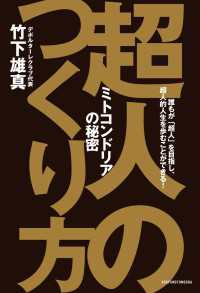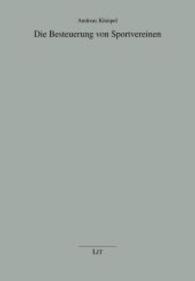Full Description
This book is written by a diverse cohort of American educators, including professors, teachers, and school administrators from pre-K to college levels. They come from disciplinary areas of child development, special education, English as a second language, counseling, technology, school administration, educational psychology, educational measurement and testing, as well as mathematics education. The chapters explore various topics, ranging from standardized testing, roles of central office, teacher evaluation, teacher professional development, gender differences, diversity, student engagement and parental involvement, student services provided at school, use of technology with teacher and students' perspectives of technology use, self-efficacy beliefs, to teacher's perspectives of play in early childhood settings. While the chapters reflect diverse conceptual and theoretical orientation, disciplinary focus, methodological emphasis, writing styles, and educational implications, they add together to present a more holistic picture of Chinese education across disciplinary areas.
Taken together, these chapters reveal salient similarities and differences in theoretical underpinnings, pedagogical principles and classroom practices in China and in the United States. They also shed light on some of the larger conceptual/theoretical orientations between learning and learners in the two countries. They debunk some common misconceptions of education in the two countries as well. Since many chapters are written by American authors that reflect directly on their study abroad experiences in China, this allows fresh insight that helps to transform the view that these countries learning from one another would be a challenge into the realization that learning from one another is not only invaluable but also essential.
Contents
Acknowledgments.
Introduction to Chinese and American Education: History and Current Challenges, Chuang Wang, Wen Ma, and Christie L. Martin.
Part I: School Administration.
Chapter 1. Roles of the Central Office in American and Chinese School Systems, Tatia Prieto.
Chapter 2. Unionized Dogma of Education: China Versus America, Sony Anderson.
Chapter 3. Comparison of Chinese and American Higher Education in a Global Context, Alan Mabe.
Chapter 4. Student Perceptions of the Chinese National College Entrance Examination System, Richard G. Lambert.
Part II: Pedagogical Practices.
Chapter 5. An Exploration of One Aspiring Teacher's Journey to Multicultural Understanding, Elizabeth Ashley Ward and Lan Quach Kolano.
Chapter 6. An American Educator's Exploration of the Early Childhood Education System in China, Pamela L. Shue and Meredith Jones.
Chapter 7. China and the United States: A Comparative Review of Educational Technology, Patti Wilkins and Drew Polly.
Chapter 8. Comparing Mathematics Teaching in the United States, China, and Germany, Drew Polly and Lauren Breindel.
Part III: Students in China and the United States.
Chapter 9. Preparing Students With 21st-Century Life Skills in an Age of Globalization: In Search of the Middle Ground Between East and West, Richard G. Lambert.
Chapter 10. Self-Efficacy Beliefs and Self-Regulated Learning Strategies of Chinese Students Learning English as a Second Language and as a Foreign Language, Pingan Huang, Chuang Wang, and Liqun Xie.
Chapter 11. Paparazzi Communism: The Inner Conflict of Beauty and Externalized Racism for an African American Woman in China, Adrienne L. Wynn.
Chapter 12. One Institution's Response to the Rapid Rise of Chinese Undergraduates, Peter Briggs.
Chapter 13. Conclusion: Implications for Chinese and American Educational Thinking and Practices, Christie L. Martin, Chuang Wang, and Wen Ma.
About the Editors.
About the Contributors.
-

- 電子書籍
- 超人のつくり方







